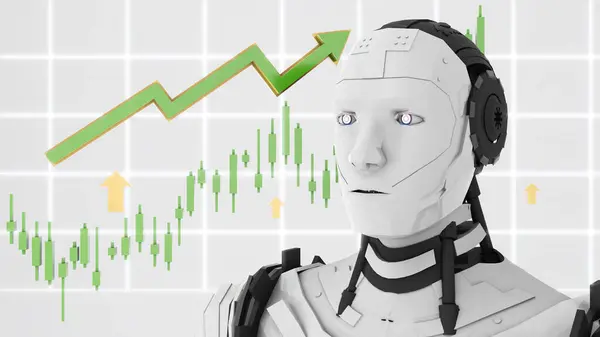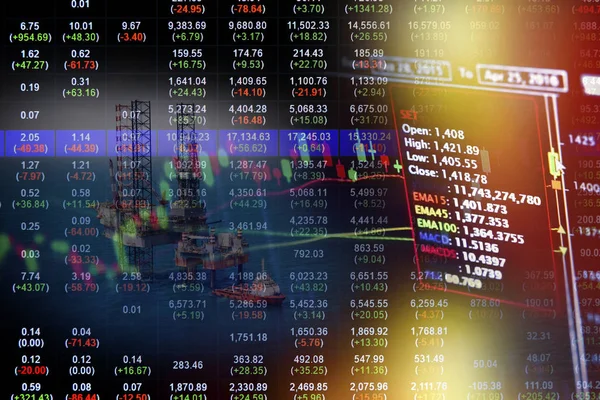In the intricate web of global finance, the foreign exchange market, known as Forex, is the pulsating heart where currencies are traded day and night with volumes reaching trillions daily. This high-paced environment has seen a significant shift with the advent of automated forex trading systems, where algorithms and robots have taken center stage, challenging the traditional norms of currency trading. As an increasing number of traders lean towards these automated solutions, it becomes essential to explore the nuances, potential, and implications of this technological revolution in the Forex market.
Unveiling the World of Auto Forex

The landscape of foreign exchange trading has undergone a seismic shift with the introduction of automated trading systems, commonly known as Auto Forex. At its core, Auto Forex relies on sophisticated algorithms programmed to execute trades based on predefined criteria such as price movements, market trends, and economic indicators. The allure of these systems lies in their promise to demystify the complexities of the Forex market, offering:
- Precision: By operating on strict parameters, these systems can execute trades with an accuracy unattainable by human traders.
- Speed: Algorithms can process vast arrays of information and execute trades in milliseconds, far faster than any human could.
- Emotionless Trading: Automated systems are immune to the psychological strains that often lead human traders to make impractical decisions.
- Accessibility: They level the playing field by enabling traders with varying levels of expertise to participate in the market.
- 24/7 Trading: Given that the Forex market operates around the clock, these systems can trade continuously without the need for rest.
The Rise of Robot Traders

Robot traders, or ‘bots’, have risen from the sidelines to become a dominant force in the Forex market. Their surge in popularity can be attributed to their ability to tirelessly monitor markets and execute strategies with unparalleled consistency. These bots come in various forms, from simple Expert Advisors (EAs) to more complex neural networks that are capable of learning and adapting to market conditions. Investors are drawn to these robotic assistants for several reasons:
- Diversification: Bots can manage multiple currency pairs and strategies simultaneously.
- Backtesting: Traders can evaluate the performance of a strategy by testing it on historical data.
- Risk Management: Many systems include features to protect against significant losses.
- Cost Efficiency: Bots can save on costs related to manual trading, including slippage and spreads.
- Innovation: The continuous evolution of trading bots keeps them at the forefront of market trends.
Inside the Automated Trading Craze

The craze for automated trading in the Forex market isn’t without merit. Traders have realized the potential of these systems to improve their trading outcomes through systematic and methodical approaches. This excitement has led to an ecosystem teeming with diverse offerings:
- Proprietary Systems: Developed by institutions for exclusive use, these systems are often shrouded in secrecy.
- Commercial Systems: Available to the public, these systems vary widely in terms of cost and complexity.
- Open Source: Enthusiasts and experts contribute to the development of free, community-driven systems.
Despite the enthusiasm, it’s crucial for traders to approach these systems with due diligence, understanding that not all automated traders are created equal and that they require comprehensive knowledge and attention to maintain.
Navigating Forex Bots’ Complexity

For the uninitiated, the world of Forex bots can be overwhelmingly complex. These systems, while designed to simplify trading, come with their own set of challenges. To navigate their complexity, a trader must:
- Understand the underlying algorithm and its suitability for current market conditions.
- Set appropriate risk parameters to avoid significant drawdowns.
- Regularly update and tweak the system in response to market changes.
- Stay aware of technological issues like connectivity or platform compatibility.
- Recognize the limitations and not rely solely on automation for success.
- Ensure compliance with regulatory standards applicable to automated trading systems.
Evaluating Auto-Trade Performance

To measure the effectiveness of an auto-trade system, it is essential to look beyond mere profits. Performance evaluation should encompass:
- Profitability: The bottom line is important, but it should be assessed over a meaningful period.
- Risk-to-Reward Ratio: A system’s ability to balance potential gains against possible losses.
- Drawdown: The maximum drop in account equity from peak to trough.
- Consistency: The system’s ability to perform steadily over time.
- Scalability: Whether the system can handle increased capital without compromising its performance.
- Regulatory Compliance: Adherence to legal standards is as crucial as financial success.
| Factor | Significance |
|---|---|
| Profitability | Direct measure of financial success. |
| Risk-to-Reward Ratio | Indicator of the system’s risk management effectiveness. |
| Drawdown | Assessment of the system’s stability and potential for recovery. |
| Consistency | Reliability indicator over various market conditions. |
| Scalability | Ability to maintain performance with capital changes. |
| Regulatory Compliance | Ensures legal operation within the forex market. |
The Future of Forex Automation

As technology advances, the future of Forex automation appears boundless. Industry insiders predict further integration of artificial intelligence and machine learning to create more sophisticated and autonomous systems. This progression could lead to:
- Enhanced predictive analytics for better decision-making.
- Greater customizability to meet individual trader requirements.
- More robust risk management strategies.
- Deep learning capabilities that evolve strategies autonomously.
- A regulatory landscape adapting to the rise of automation.
- The democratization of Forex trading, as tools become more accessible.
The trajectory of Forex automation is set towards creating a more efficient, inclusive, and intelligent trading environment, which holds the promise of reshaping the Forex industry as we know it.
As the curtain falls on the exploration of automated Forex trading systems, it is evident that the convergence of technology and finance has birthed a new era in currency trading. While robots may not hold the emotional allure of human traders, their precision, speed, and reliability mark a pivotal shift in how the Forex market operates. As with any technological revolution, there are risks and challenges, but for those willing to embrace the complexity and potential of Forex bots, the future is filled with intriguing possibilities. A cautious yet optimistic approach could unlock doors to unprecedented levels of market analysis, trading efficiency, and financial success that were once the stuff of dreams for Forex traders around the globe.

Interesting to read about the future of Forex automation and how AI and machine learning will improve trading systems.
The future of Forex automation includes more AI and machine learning for better trading strategies.
I found it helpful that the article talks about evaluating auto-trade performance by looking at profitability, risk-to-reward ratio, and more.
Automated systems are becoming more accessible and can make Forex trading easier for everyone.
Evaluating an auto-trade system needs to look at profitability, risk, drawdown, consistency, and compliance.
Bots help in diversification by managing multiple currency pairs at the same time.
The article explains how Forex robots can trade 24/7 without stopping. This is very interesting!
It’s good to know that Forex bots can manage multiple currency pairs and strategies at the same time. Makes trading easier.
Auto Forex systems must be regularly updated and tweaked to match market changes.
I learned that automated Forex systems can help with precision, speed, and emotionless trading. Very informative!
Robot traders can monitor markets and execute trades very fast and without emotions.
Auto Forex uses algorithms to trade based on price movements and economic indicators.
The article says that traders should understand algorithms and set risk parameters. Important info for new traders.
Automated systems are good for 24/7 trading because they don’t need to rest.